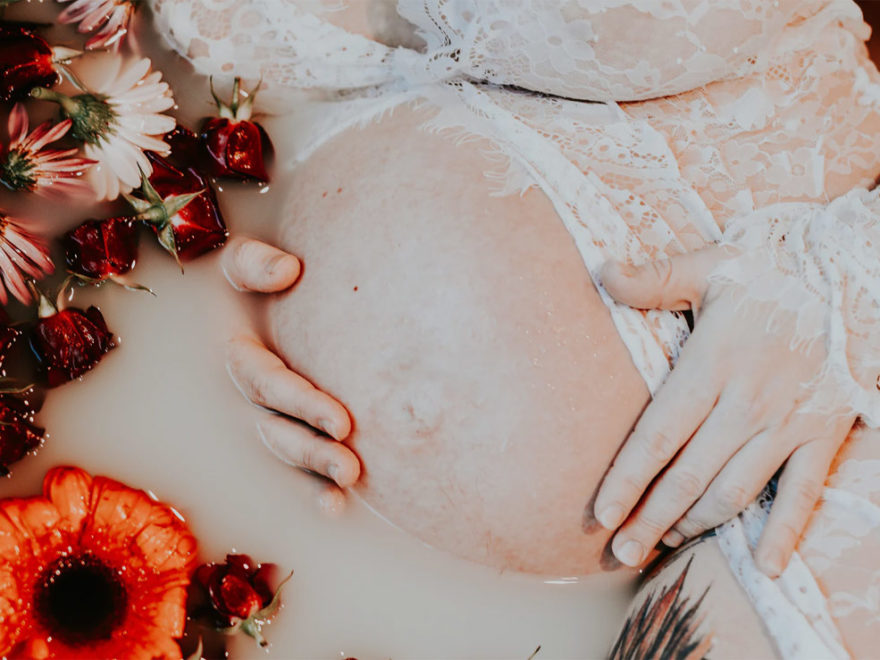Pregnancy can be an extraordinary time in a woman’s life. While many women start to focus on what they put in their bodies (and what they can no longer put in their bodies like alcohol and sushi), many forget the largest organ of their body still needs care too: their skin. A woman’s skin can go through many different changes, and, unfortunately, many women forgo skincare to focus on their baby’s health. However, what you put on your skin during pregnancy doesn’t just help avoid skin abnormalities during pregnancy, but helps your baby too.
What Causes Skin Issues During Pregnancy
It’s no secret that during pregnancy, there are fluctuations in hormone levels. These changing hormone levels can do a number on the skin. However, every woman is different. Some women may not experience any skin abnormalities at all. Others might experience everything from dry skin to acne. However, depending on the pregnancy, there are some minor to major stretch marks to deal with. Stretch marks aren’t a sign of changing hormones. They’re simply the skin struggling to keep up with the growing body. As the baby grows, it pushes the elastic fibers to “stretch” around the belly, breasts, and other areas. Fresh stretch marks start out as red before turning to gray or white once the pregnancy is over. Most women get stretch marks during pregnancy. It’s challenging to avoid, mostly because it’s a natural process. However, genetics does play a role in the severity of the stretch marks. Even though stretch marks are difficult to prevent, there are some ways to minimize them during pregnancy, so they’re not long-term issues after the pregnancy is over.
Watch What You’re Eating
Just because you’re eating for two now doesn’t mean you have to consume double the amount of calories. That means consume nutrient-rich foods that can give you and your growing child plenty of vitamins and minerals without having to double your calories. This will prevent unnecessary weight gain more than the weight of the child gained during pregnancy.
Exercise
Exercise is another way to keep any excess weight off during pregnancy. However, don’t go competing in triathlons during your third trimester. That means doing light to moderate cardio. Exercise helps keep your heart healthy during pregnancy and helps relieve any pregnancy-related pains. Exercise is also good for relieving stress.
Vitamins
Believe it or not, vitamins play an important role in helping to prevent stretch marks. Vitamin C, especially, is an essential vitamin to help your body produce the collagen needed to help fade stretch marks because it keeps your skin elastic. The more flexible your skin is, the less likely there will be breaks as your skin is stretching to accommodate a growing child.
Vitamin E can be found in some multivitamins or prenatal vitamins for pregnancy. You can also apply vitamin E topically through different creams to help calm irritated or damaged skin. Vitamin E is also another precursor vitamin to collagen, which helps promote skin’s elasticity.
Another vitamin that helps encourage collagen production is vitamin A, and vitamin A is relatively easy to get vitamin, prenatal vitamins, fruits, and vegetables. However, it’s advised to only get vitamin A through food sources and not through any topical creams due to the risk of vitamin A toxicity.
Vitamins can help take care of you from the inside out when you’re pregnant with a child. You can also find prenatal vitamins that contain zinc, which can also help boost collagen production. These vitamins and minerals aren’t just good for you and your child, but they help keep your skin stretchy enough to expand without causing major stretch marks.
However, even after following all of these prevention tips, you may find yourself with minor stretch marks (it is a natural process after all). Fortunately, they shouldn’t last very long after your pregnancy with simple lifestyle changes.

